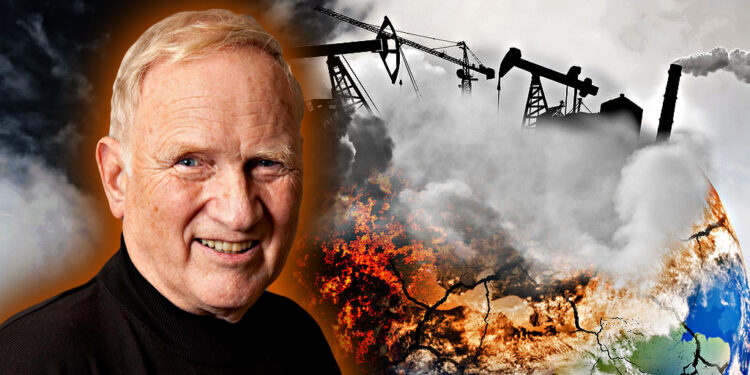by Dr. Rudolph Kalveks, Daily Sceptic:

In a recent lecture, Nobel Laureate physicist John Clauser exposed how the Intergovernmental Panel on Climate Change (IPCC) models and analyses, which are relied upon by politicians and activists to support claims of a ‘climate crisis’, do not meet basic standards of scientific enquiry. Clauser received his Nobel prize in 2022 for the observational measurement of quantum entanglement and understands well the problem of distinguishing a physical signal from background noise.
TRUTH LIVES on at https://sgtreport.tv/
Clauser shows that, when corrected for the IPCC’s error prone arithmetic and statistics, the observational data do not support the power imbalance claimed to be responsible for global warming. Furthermore, the outputs of climate models are at variance with the observational record. Clauser discusses the roles of convection, clouds and their variability in providing a negative feedback mechanism, and proposes that this acts as a thermostat that stabilises surface temperatures. Clauser’s conclusion is that claims of a ‘climate crisis’ lack scientific substance and that Net Zero policies are an unnecessary hindrance.

Clauser’s talk is available on YouTube. However, there is merit in reviewing the physics arguments that draw on the observational data about atmospheric energy flows to refute the notion of an anthropogenic global warming (AGW) induced climate crisis.
Energy Flows in the Climate System
It is useful to start with a simplified depiction of the solar energy flow that reaches the Earth, its transformation by the Earth’s climate system and the resulting (mostly thermal) energy flow that leaves the Earth’s atmosphere. This is shown in Figure 1, taken from a recent IPCC report.
The IPCC diagram shows an energy imbalance, being the difference between the incoming visible and UV solar radiation 340 W/m2, less the amount reflected (100 W/m2), less the outgoing infra-red (IR) thermal radiation (239 W/m2). The claimed imbalance at the Top of the Atmosphere is 0.7 W/m2 (give or take 0.2) and the IPCC asserts that this is driving the continuing warming of the climate system.

The radiation measurements necessary for this calculation are carried out at different wavelengths by instruments carried by satellites, and observational errors are inevitable. Combining the uncertainty ranges in the incoming, reflected and outgoing streams shown in Table 1, by using the standard statistical Root Mean Square rule, shows that the error margin in the calculated imbalance is actually 3 W/m2, some 15 times greater than the 0.2 W/m2 error margin claimed by the IPCC. In short, there is no observed energy imbalance. The claimed imbalance of 0.7 W/m2 is swamped by observational error, and, from a scientific perspective, it is described by Clauser as a “fudge”.
Natural Variability
Importantly, the IPCC treatment understates the natural variability of the solar energy flow that penetrates the climate system. One key element driving this variation is ‘albedo’, the proportion of sunlight that is reflected by clouds or the surface. The extent of cloud cover, which typically covers about two-thirds of the Earth’s surface, is actually quite dynamic, and as a consequence, albedo varies from month to month in a range of 0.275 to 0.305. Clauser estimates that the resulting monthly variation in reflected energy spans the range (95-105 W/m2). Clauser observes that this fluctuating monthly pattern is not well replicated by the Coupled Model Intercomparison Project (CMIP) computer models used by the IPCC, which must therefore be missing key aspects of the physics of clouds.



